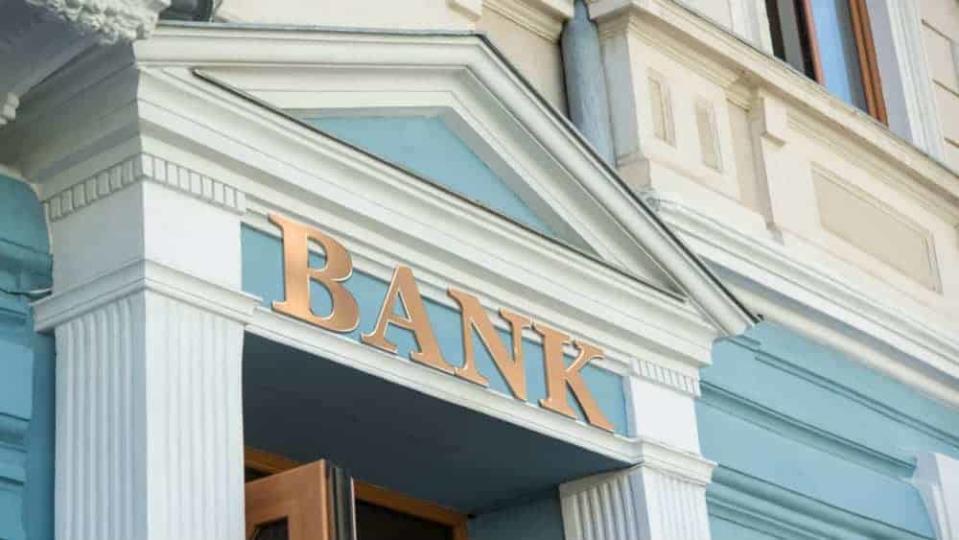As Banks Expand South of the Border, Which Is the Better Bet for Growth?

Written by Demetris Afxentiou at The Motley Fool Canada
Canada’s big banks are among the best long-term options for investors to consider. The banks offer a long-established history of paying out juicy dividends. They also boast an established domestic network at home and a growing presence in international markets, such as the United States. But among those big banks that are expanding into the U.S. market, which is the better bet for growth?
Let’s look at both Bank of Montreal (TSX:BMO) and Toronto-Dominion Bank (TSX:TD) to determine which bank is better for your portfolio.
The case for Bank of Montreal
Bank of Montreal has the distinction of being the first company in Canada to pay a dividend to shareholders. And after two centuries, BMO has never failed in paying out a juicy quarterly dividend.
Today, that dividend works out to an appetizing 4.28%. This means that a $30,000 investment in BMO, as part of a larger, well-diversified portfolio, will earn an income of just over $1,280.
With a solid footing in the domestic market, BMO, like most of its peers, has turned to the U.S. for further growth. The bank has already an impressive presence in the U.S. Midwest, but BMO’s footprint is set to grow significantly.
Back in late 2021, BMO announced a US$16.3 billion deal to acquire California-based Bank of the West. Since then, the acquisition has been garnering the requisite approvals to proceed. Final approvals came in earlier this month, meaning that the deal is set to close as early as later this week.
The implications of that deal are staggering. BMO will add a whopping 1.8 million new customers and over $100 billion in loans and deposits. In terms of reach, once the deal closes BMO will catapult into position as one of the 15 largest banks in the lucrative U.S. market.
In total, the bank will have a presence across 32 U.S. state markets with a branch network of over 1,000 locations. That presence includes the lucrative California market, where Bank of the West was based.
Despite that obvious long-term appeal, BMO still trades at a discount over where it stood at this time last year. In fact, over the trailing 12-month period, BMO trades lower by 7%.
That discount translates into a very juicy price-to-earnings (P/E) ratio of just 6.68, making BMO a compelling offer for investors looking for a big bank to buy.
The case for TD
TD is Canada’s second-largest lender and represents another big bank that is rapidly expanding its presence south of the border. Like BMO, TD boasts a well-established domestic network as well as a growing presence in the U.S. market. One key difference is that TD already has a larger footprint than BMO in both markets.
In the U.S., TD currently boasts a network of branches that stretches along the east coast from Maine to Florida. And, like BMO, TD is expanding its U.S. presence.
Last year, TD announced that it was acquiring Memphis-based First Horizon in a US$13.4 billion deal. That deal is still subject to regulatory approvals, which are expected later this year. Upon completion of the deal, TD will be one of the six largest banks in the U.S. market, with a presence in 22 states.
The deal will also see TD bolster its presence in high-growth markets such as Florida while expanding into new markets. The First Horizon deal will add 1.1 million customers and an additional 400 branches to TD’s massive network. This makes the bank one of the better bets for growth investors.
As an income stock, TD offers a juicy quarterly dividend. The current yield on that dividend is slightly lower than BMO at 4.20%. TD offers a similarly impressive payout, with nearly two centuries of paying dividends without fail.
TD currently trades down over 9% over the trailing 12-month period and boasts a P/E of 9.65.
Which is the better bet for growth investors?
Both TD and BMO offer compelling growth cases, and either one would do well as part of a larger, well-diversified portfolio.
In my opinion, BMO is the better bet for growth right now, owing to its already approved acquisition, discounted stock price, and the potential of that lucrative California market.
The post As Banks Expand South of the Border, Which Is the Better Bet for Growth? appeared first on The Motley Fool Canada.
Should You Invest $1,000 In Bank of Montreal?
Before you consider Bank of Montreal, you'll want to hear this.
Our market-beating analyst team just revealed what they believe are the 5 best stocks for investors to buy in January 2023... and Bank of Montreal wasn't on the list.
The online investing service they've run for nearly a decade, Motley Fool Stock Advisor Canada, is beating the TSX by 16 percentage points. And right now, they think there are 5 stocks that are better buys.
See the 5 Stocks * Returns as of 1/9/23
More reading
Brookfield Asset Management Spin-Off: What Investors Need to Know
Passive Income: 4 Safe Dividend Stocks to Own for the Next 10 Years
Fool contributor Demetris Afxentiou has positions in Toronto-Dominion Bank. The Motley Fool has no position in any of the stocks mentioned. The Motley Fool has a disclosure policy.
2023

 Yahoo Finance
Yahoo Finance 